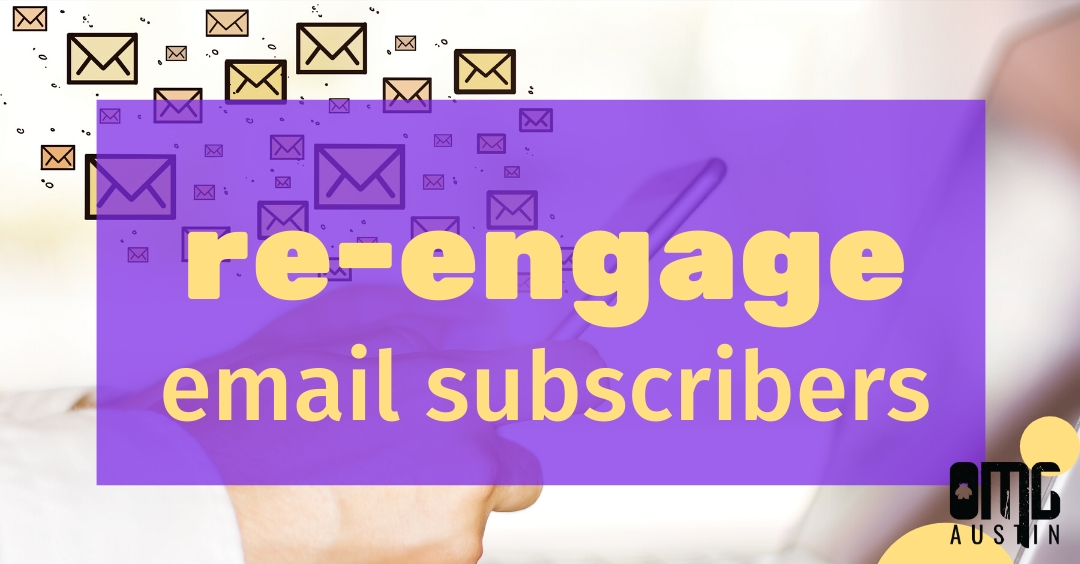Three ways to re-engage email subscribers
 https://www.omahamediagroup.com/images/uploads/monster_gallery/Omaha-Media-Group-Black.jpg
https://www.omahamediagroup.com/images/uploads/monster_gallery/Omaha-Media-Group-Black.jpg

Email marketing is one of the most utilized marketing services out there for companies from small to large, but over time, a list of email subscribers can become dormant, unsubscribe or feel fatigued with the overload of information that is setting off their inbox notifications.
Once this starts to occur, this is what our email marketing Austin experts call a dead email list of subscribers. This means you have a dead email list since your subscribers no longer open your emails, and your email list does not continue to grow.
Luckily, there are steps you can take to re-engage your inactive email subscribers to spark their interest. Here are the three ways to re-engage and establish your trust again with a dead email list.
1. Identifying the reasons for disengagement
The first and foremost important step is to try to understand the reasoning behind a list that was once so active which is now suddenly ‘dead’. This could be a multitude of reasons from the content being sent too often to not the right type of content.
Some of the common reasons that contribute to inactive email subscribers include:
- • You no longer send emails or send emails too often
- • Your subscribers' changed their email addresses
- • Your emails are too salesy
- • Your emails have the same content over and over again
What was the reasoning behind their subscription to your email campaigns to begin with? From there, a list might need to be resegmented to set a clear audience depending on their reasonings behind subscribing to the email list.
A marketer should place users who have changed their email addresses in one segment and subscribers who have never purchased a product in another.
2. Developing a targeted email series
Once the list has been segmented properly, what is the content for each list? Each list will need their own content based on lists, goals and sales funnels in place.
Dependent on these lists, this will be your content marketing strategy that should be in place. If list A regards continuous customers and buyers, what type of content will they need?
How about coupons, reminders to refill their orders, new releases, related products and other types of content. This same content that is being utilized on blogs and social media marketing can be distributed in email campaigns as well.
If list B regards potential customers and clients who have yet to subscribe, what would interest them? Learning more about the company, products and services, mottos and coupons and discounts.
If list C regards those who are dis-engaged with content and are part of this ‘dead’ email list subscribers, what content would re-engage them? New promotions, products, services or a reminder of who the company is?
No matter what, all email content should be targeted based on the audiences within each list. Each person subscribed to get your email campaigns for a purpose, but what was that overall purpose. For Kenny, it will be different than Jamie, but it is still critical to understand and know.
3. Finding out the best time to send your emails
Our email marketing Austin experts suggest that emails be sent out at the best time to each list, and depending on the audience, each list will more than likely vary significantly in the best time to publish.
There are hundreds of articles out there claiming specific times such as Tuesday at 10 a.m. are the best or Sunday afternoon, but the thing is, it all depends on your audience and not general times.
This is where a company, entrepreneur or marketer can test different times and days for a couple of email campaigns to find the best options.
Our email marketing Austin experts provide email marketing automation, management and our own platform for all clients. Contact OMG Austin today for help with your email marketing and digital marketing.
Posted In: E-Mail Marketing
